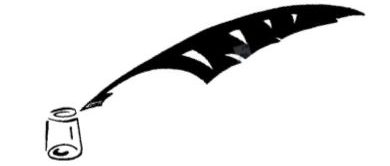One of the most confusing elements of writing dialogue is how to format and punctuate it properly.
There are so many perceived rules and regulations it can become a nightmare for authors to remember what to do and when.
I’ve broken it down into three simple steps:
- Every new speaker needs a new paragraph
- What the character says stays on the same line/paragraph as what they do
- Only use a comma if the dialogue is followed by a tag, otherwise, use a full stop, question mark, or exclamation mark
Easy! Look:
Emma and Paul were watching TV. ‘Come on,’ Emma said.
‘What?’
‘Let’s go to the pub.’ She grabbed his hand to pull him off the sofa.
‘I’m not sure I’m in the mood,’ Paul said. ‘Shall we go tomorrow instead?’
Only the words spoken and punctuation marks are placed inside the quotation marks. Other parts of the sentence – dialogue tags, actions, and thoughts – go outside the quotation marks.
Dialogue always starts with a capital letter, regardless as to its place in the sentence, although interrupted speech is lower case when it resumes – see the later examples.
Next I’ll show you the most used combinations of speech, tag, and action with their correct format and punctuation. There’s a printable version of this list so you can keep it to hand.
One line of dialogue with no tag: the whole sentence, including punctuation, is enclosed in the quotation marks:
‘I love you.’
One line of dialogue with tag: The dialogue is enclosed in the quotation marks with a comma within them. As the tag, he said, is part of the sentence, it is not capitalised. The full stop ends the sentence:
‘I love you,’ he said.
One line of dialogue with tag first: The comma is still needed to separate the speech from the tag but comes first in this instance and the full stop ends the sentence within the quotation marks:
He said, ‘I love you.’
One line of dialogue with tag and action: The dialogue is enclosed in quotation marks, a comma follows the dialogue and before the closing quotation mark, this is followed by the tag which is separated from the action by a further comma. A full stop ends the sentence:
‘I love you,’ he said, hoping she had heard him.
The tag and action can come first:
Moving closer, he said, ‘I love you.’
Tag interrupted dialogue: The same sentence of dialogue can be interrupted by a tag and an action:
‘I love you,’ he said, ‘and I always will.’
‘I love you,’ he said, pulling her close, ‘and I always will.’
Question marks in dialogue: The question mark goes inside the quotation mark and there is no comma. The tag doesn’t need a capital letter as it is still part of the same sentence, the same goes for exclamation marks:
‘You know I love you, don’t you?’ he asked.
‘I love you!’ he shouted, running after her.
Dialogue interrupted by dialogue: If a character interrupts another midsentence, an em dash is used:
‘I love you—’
‘No, Paul, you don’t.’ She held up her hand to stop him continuing.
Trailing dialogue: If a character starts to say something but the speech trails off before they complete the sentence, ellipses are used:
‘I love …’
Names in dialogue: always use a comma before and/or after the person’s name who is being directly addressed:
‘I love you, Emma,’ he said.
‘Emma, I love you,’ he said.
‘Paul loves you, Emma, you know that.’
‘He loves you, Emma, more than he loved Sarah.’ (note there is no comma before Sarah as she isn’t being directly addressed).
This may seem complicated at times but following these ‘rules’ will make your dialogue punctuation and formatting correct 99.9% of the time. There are other combinations, for example, paragraphs and longer speeches, but I’ll keep it simple today and share the others with you at a later date.
You can download a copy of these examples by clicking here: Creating Perfection – Formatting Dialogue – Print Out
I hope this helps and do let me know if you have any questions.
Have a super day, keep writing!

I agree with all of that Emma. I use the convention you have shown for no space before the em dash (Ctrl, Alt, numeric keypad minus in Word) but space before ellipsis.
The only other thing is single or double quotes. My understanding is single quotes are more conventional in the UK and double in the US.
LikeLiked by 1 person
That’s right, Richard. Those tips will be detailed in a post next week 😀
LikeLike
Reblogged this on Emma The Little Bookworm and commented:
Formatting and punctuating dialogue in fiction is a real stumbling for many authors. There’s a simple and easy explanation of the most used dialogue, tag, and action combinations, and how to punctuate them, over on my editing website.
LikeLike
I have had to teach the correct use of dialogue in some of the many schools I visit.
Your explanation is clear and well put.
I am sure it will be a very helpful reminder for anyone when writing dialogue.
A good reference.
LikeLiked by 1 person
Thanks, Sue! I hope you do find it helpful x
LikeLike
Your posts are always interesting and helpful!
thank you
LikeLike
Wow … this is so awesome … thank you xx
LikeLiked by 1 person
My pleasure! Happy writing x
LikeLiked by 1 person